I have recently returned from a trip to Italy, my favourite place to visit. I have so much I want to write about and share I really don’t know where to begin. I don’t think it’s just because I’m Italian, I think I’d love Italy just as much if I weren’t. It has everything and more. As an ancient history nerd I am in awe by its history, I love the fact that I can walk on streets that are thousands of years old and go underground to ancient villas and imagine life in a time when Rome pretty much ruled the world. And contrary to my husband who perhaps had seen one too many museums and is not quite as obsessed with ancient history as I am, they are more than just rocks!
You can’t beat the food in Italy, and I love that it’s ok to eat a pastry for breakfast, that somehow the massive amount of carbs I consume there don’t have any effect on my stomach as they do at home. I love that it is perfectly normal to drink wine at lunch-time, then again around 5pm while you sit in the piazza eating free snacks, then ok, let’s have some more with dinner… because this way no-one seems to overindulge (or perhaps they’re constantly over-indulging, either way I’m loving it). I love that good bread comes with every meal, and that it is perfectly ok to eat a whole pizza to yourself and then eat gelato every single day if you want.
I love the scenery, the doorways hidden down narrow streets covered in flowers in Rome, the impossibly picturesque pastel coloured houses hanging off cliff sides over an impossibly blue sea in the Amalfi Coast and Cinque Terre, I love the mish-mash of colour and washing hanging over balconies contrasted with strings of fairy lights in Naples, the rows and rows of lemon trees, the contrast of thousand year old ruins to the modern day suburbia, as well as the magnificence of iconic Rome. It is fascinatingly beautiful.
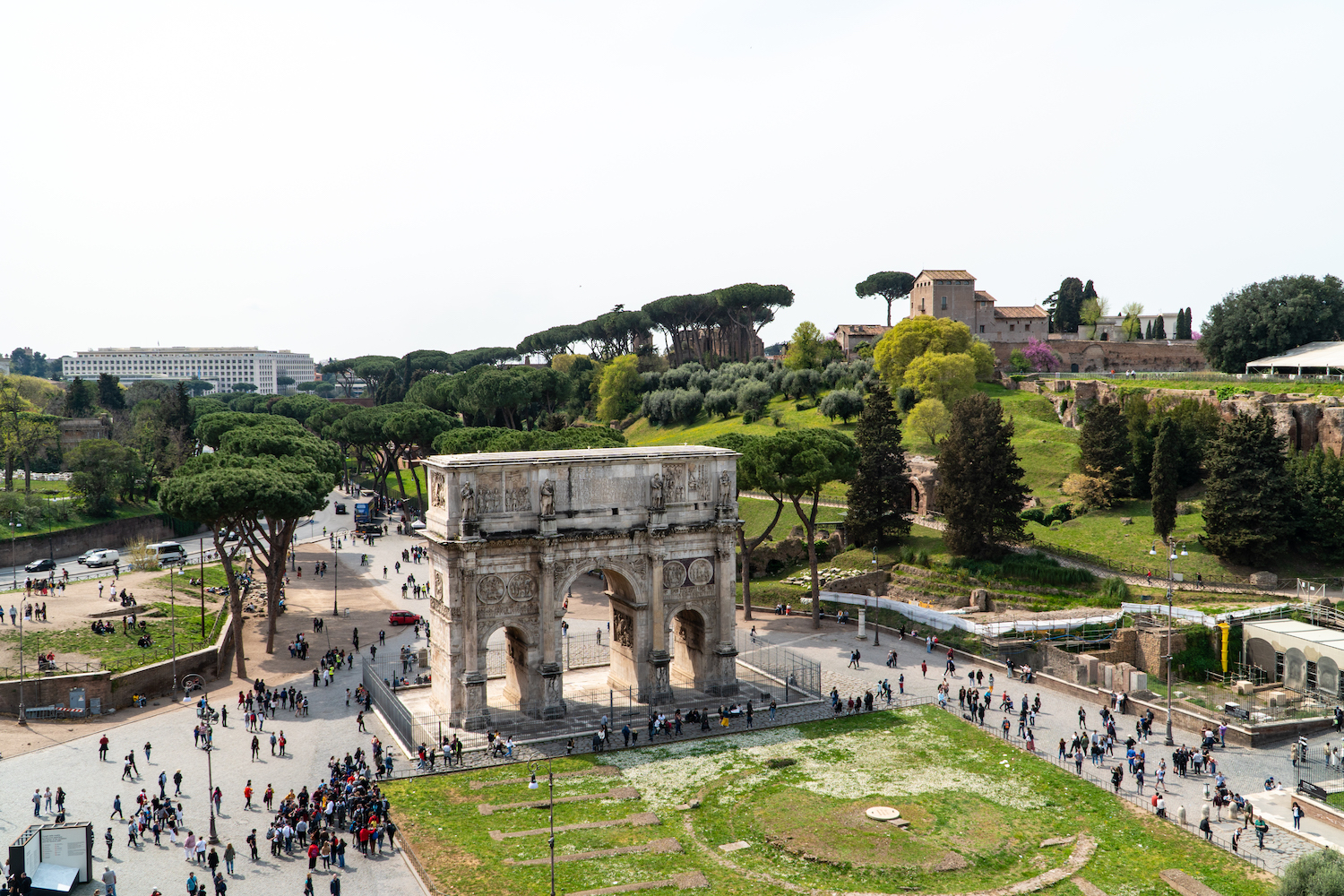
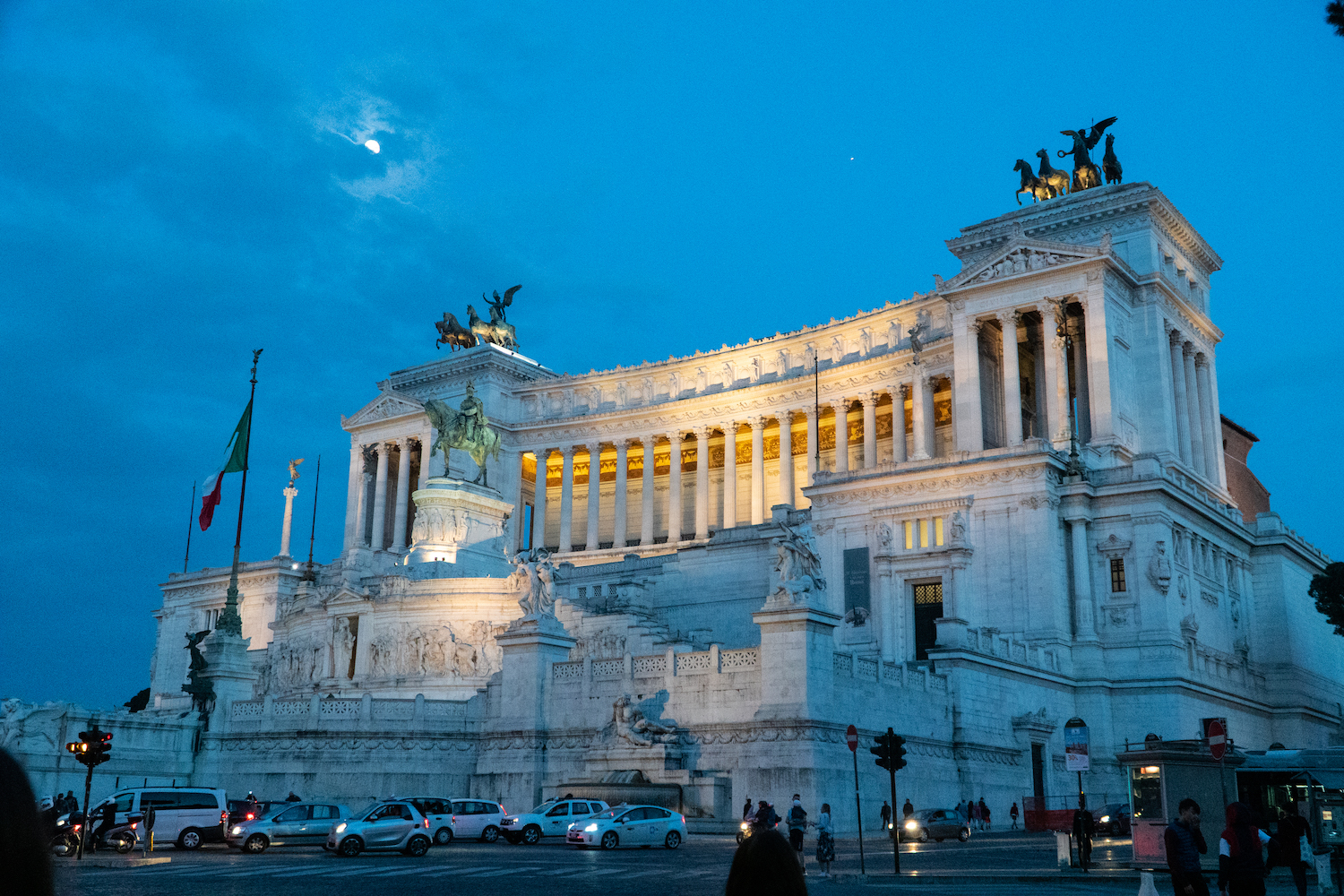
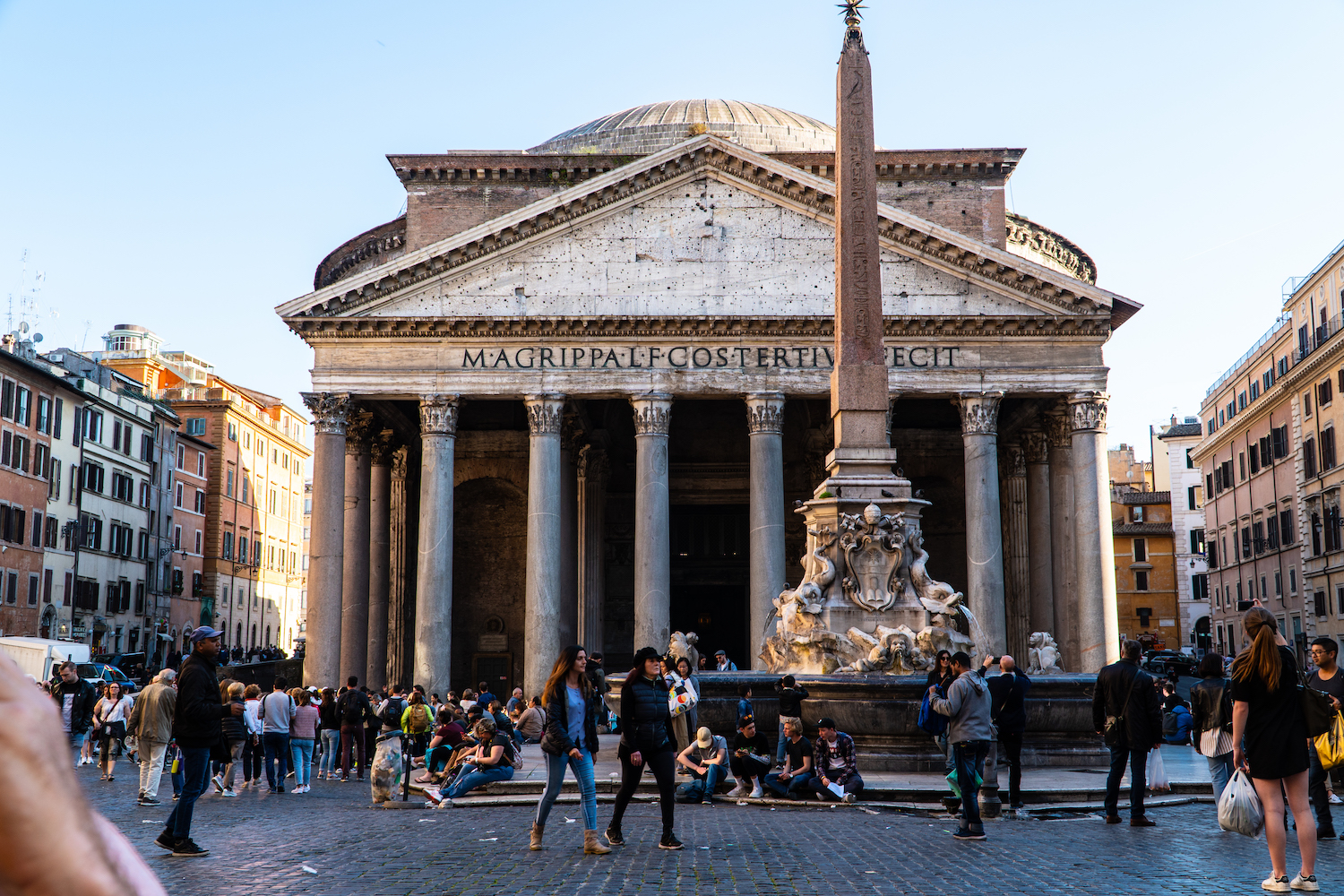
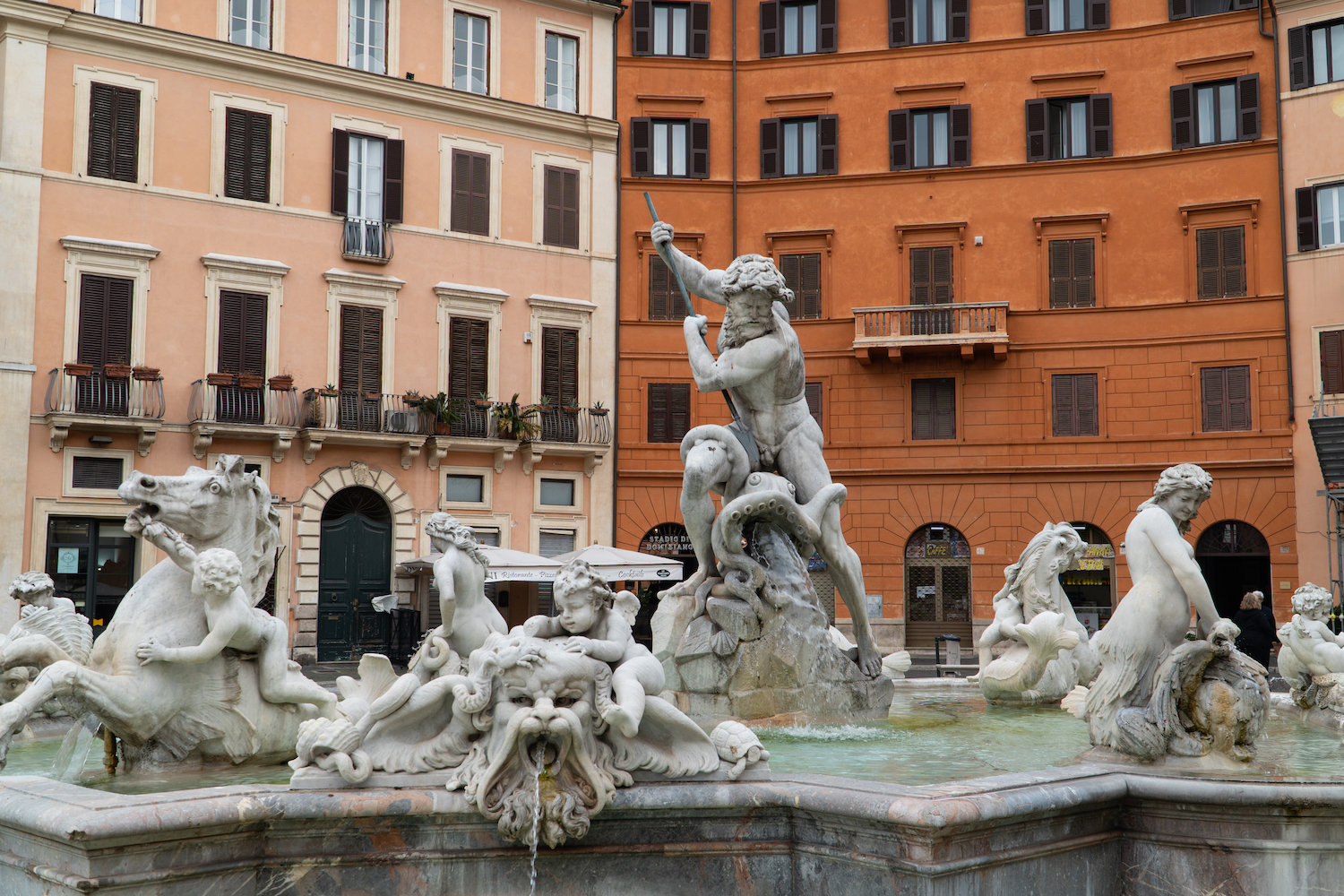
The only thing I don’t like in Italy is the tourists. Ha! I know, funny coming from me.. I’m a tourist myself. But for all the reasons I love Italy, it becomes clogged with tourists who love it too. The major sites can be a nightmare, especially places like the Colosseum or the Vatican in Rome, and don’t even get me started on trying to catch a bus anywhere in the Amalfi Coast! But it’s unavoidable really, especially if you plan on being there when the weather is warm. So you’ve got to expect some crowds…..and that’s ok. But what I really don’t like about highly touristy areas is that it can feel like you’re not in Italy at all. I like to immerse myself in Italy, I love to hear the beautiful rhythmical language. Locals walking past on their phones, talking to each other in the street, it’s all part of the experience. But in the most popular touristy destinations like Sorrento (filled with British tourists) I found it lacked that quality. Anywhere near the major sights in Rome were filled with hawkers trying to sell you something: ‘water, water, water..’ or waiters enticing you into their restaurant with the promise of ‘English menu’. Ugh! I couldn’t think of anything worse. And unfortunately tourists just don’t get treated the same as the locals at restaurants. They just don’t!
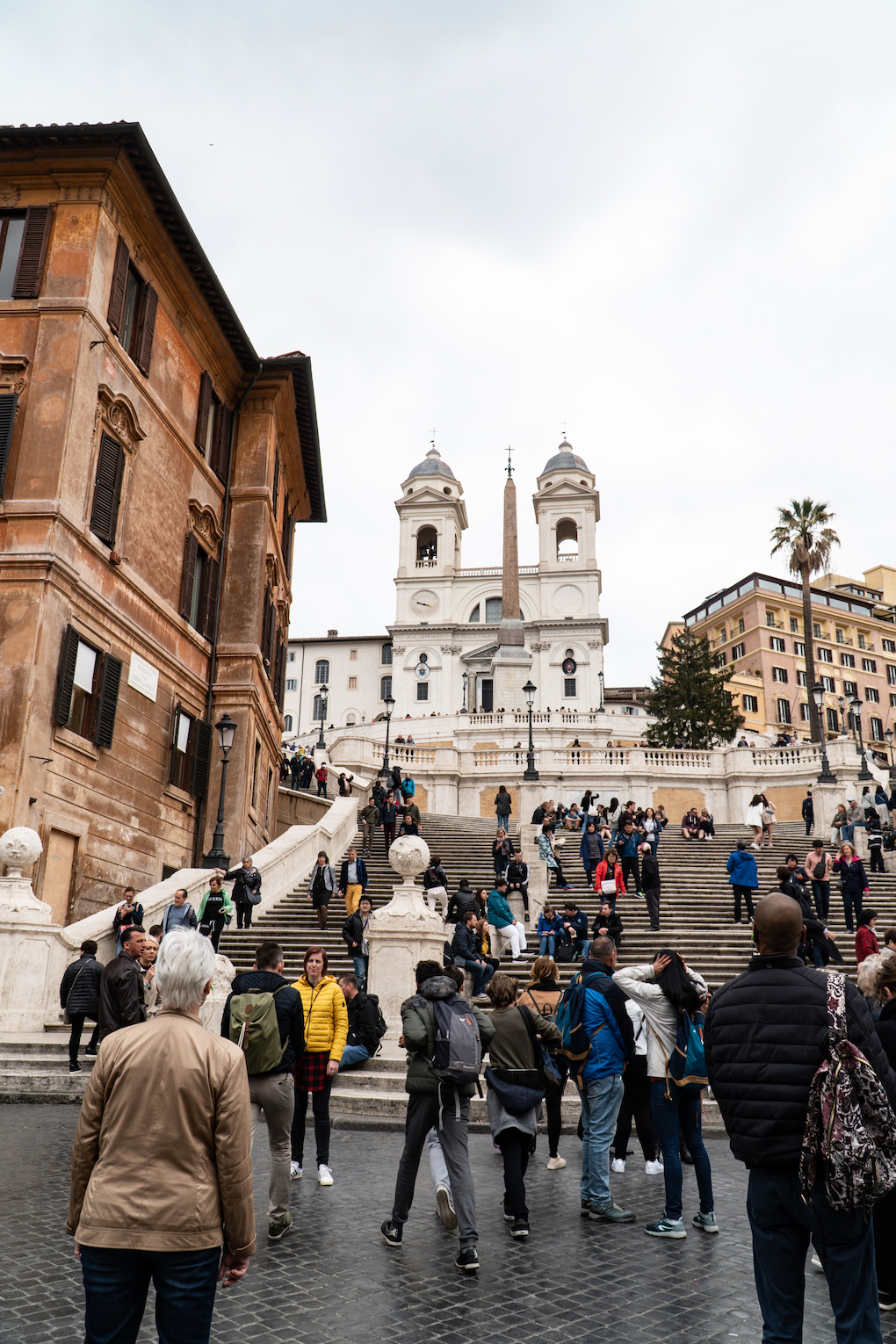
The Spanish Steps – best avoided if you don’t like tourists!
On a previous trip to Rome my husband and I stopped to eat at a restaurant on a laneway very close to the Pantheon (first mistake – too close to major site equals lacklustre food because some restaurants don’t think tourists know any better). The meal was pretty ordinary so I don’t remember much, but I do recall my husband ordering a Caprese salad (one of his favourite meals in Italy because the tomatoes are so good). Well, when the dish came to the table, instead of a dish of creamy mozzarella alongside deep red heirloom tomatoes we were used to being served, his tomatoes were almost opaque, floury, and one of the slices he was served was actually the top of the tomato, with the green stem still attached! I was aghast! What to do? Well, back then I couldn’t speak Italian very well at all, even though I could understand it perfectly (typical for young Aussies with Italian speaking grandparents). I mustered up all my courage and in very broken Italian managed to say to the waiter “Questi soni brutti pomodori…. per touristi.. ” which loosely means “these are ugly tomatoes.. for tourists”. I think ‘ugly’ was the wrong word to use, but the waiter got my drift. She smiled at me, and took the plate away. Miraculously, our replacement was red, plump, ripe tomatoes bursting with flavour. Funny thing that! She took me seriously because I spoke to her in her own language… even though I didn’t quite get it right. And she wasn’t even annoyed, she even gave me a smile.
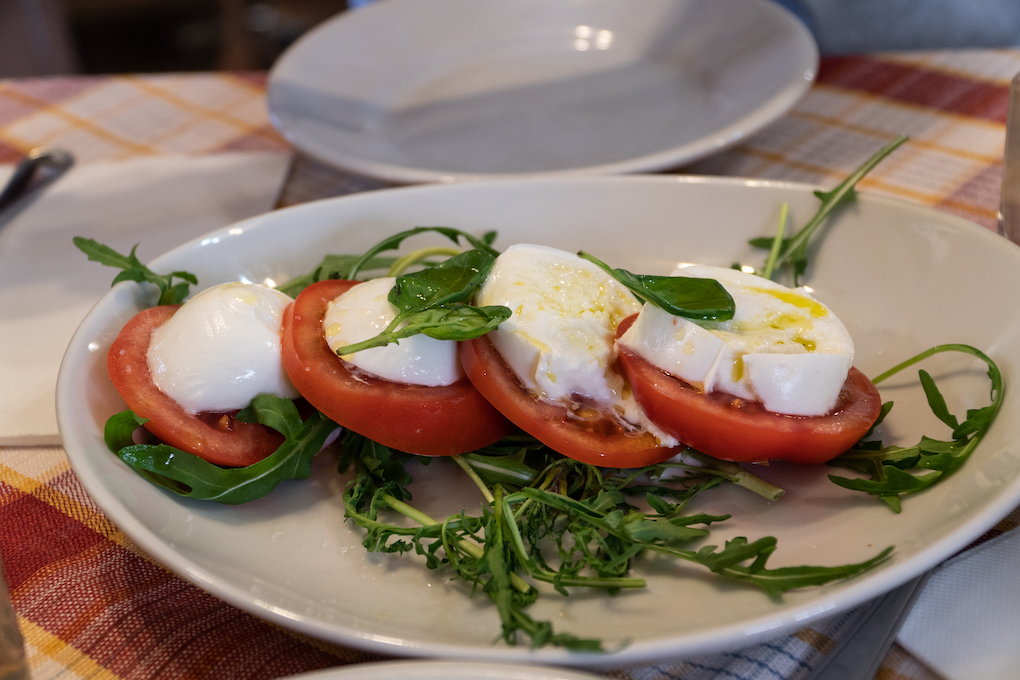
What I am eluding to you is that not only does speaking a little Italian help you in situations like the one I just described, but Italians appreciate it when you try to speak their language. I mean, think about it, imagine if every tourist who came to your country only spoke in their own language the entire time and expected you to not only understand them, but speak back in THEIR language? I realise we can’t all pick up a new language and speak it fluently before every holiday, but by learning a few words you’re not only being respectful of the locals, you are immersing yourself in another culture. It is actually fun to order from the menu in Italian, say hello when you enter a store, ask for directions or simply say thank you. And it can be very helpful when you’re in some of those out of the way places where the locals may not speak English at all. Here’s a few tips and words to help you not feel so much like a ‘touristi’.
SAY HELLO
Get in the habit of saying hello to people, when you walk into a store, a restaurant, stand next to an old lady on the train, even walking past someone in the street. It’s not only respectful and friendly, it’s what the Italians do every day. As a general rule, BUONGIORNO (bon-jor-noh), loosely meaning ‘good-day,’ is the most appropriate way to say hello to strangers. CIAO (chow) is generally reserved for people who know each other, like the difference between ‘hello’ and ‘hi’. If you really want to fit in, use BUONASERA (bona-serra), loosely meaning ‘good evening,’ to say hello if it’s after mid afternoon, not to be confused with BUONANOTTE (bona-nott-eh) meaning ‘goodnight,’ which is only used when leaving at the very end of the night, or going to bed.
USE YOUR MANNERS
If you’re not confident enough to try many words, the very least you can do is say please and thank you in Italian. Even if you have asked a question in English, and it has been answered in English, try to say PER FAVORE (per-fav-or-eh) please, GRAZIE (gra-zee-eh), thank you. It shows respect and will get a great reception. Even if you don’t know how to ask for something, use your hands to point or gesture if needed, ending with a PER FAVORE. It doesn’t matter too much if you don’t get the words right, but using please and thank you will always get you a long way.
BUT DON’T TRUST EVERYONE
OK, it’s nice to think you can be friendly to everyone and that everyone who says hello to you is full of good intentions. But just like everywhere else in the world, Italy is full of scammers, pick pockets and people trying to sell you something. Of course use common sense. Just because you’ve made eye contact with someone and said hello doesn’t mean you stop for a full-on conversation. But, the guys selling scarves, phone chargers, scarves and what-not hanging around the major sights are generally just trying to make some bucks. No need to be rude, just walk past and when they come toward you simply use an affirmative NO GRAZIE (no thankyou). Walk with purpose, use a little of the lingo and they generally leave you alone. Of course, you may not always want to say no, yes is SI.
FOOD AND DRINK
Ordering a meal at a restaurant, cafe, bar or bakery in Italian may seem a little daunting, but it’s really not that difficult. Of course, most restaurants have everything translated in English so you can just point, or say it in English followed by a PER FAVORE, but if you want to give it a go, here’s a few tips:
Ordering something off the menu: Let’s say you want a cappuccino, it’s as simple as saying: UN CAPPUCCINO PER FAVORE ( a cappuccino please). Spaghetti Carbonara? UN SPAGHETTI CARBONARA PER FAVORE. It’s that simple. If you want to order two things? Join with the word E (pronounced ‘eh’). UN CAPPUCCINO E UN SPAGHETTI CARBONARA PER FAVORE. See, easy as reading the menu and adding the UN, E and of course, PER FAVORE. Want salt? SALE (sal-eh). Pepper? PEPPE (pepp-eh). Parmesan cheese? PARMIGIANO (parm-ij-i-ano). Like your food spicy and want some extra chilli? PEPERONCINO (pepper-on-chino). So if your meal is placed in front of you and you want some chilli, just say SCUSI (meaning excuse me, that way you sound like you’re politely asking) PEPPERONCINO PER FAVORE (chilli please). Of course you could make a much longer sentence – posso vedere un po di peperoncino per favore – meaning: can I have some chilli please, if you spoke fluent Italian, but just these couple of words are enough to get you by, and the waiter will respect you giving it a go.
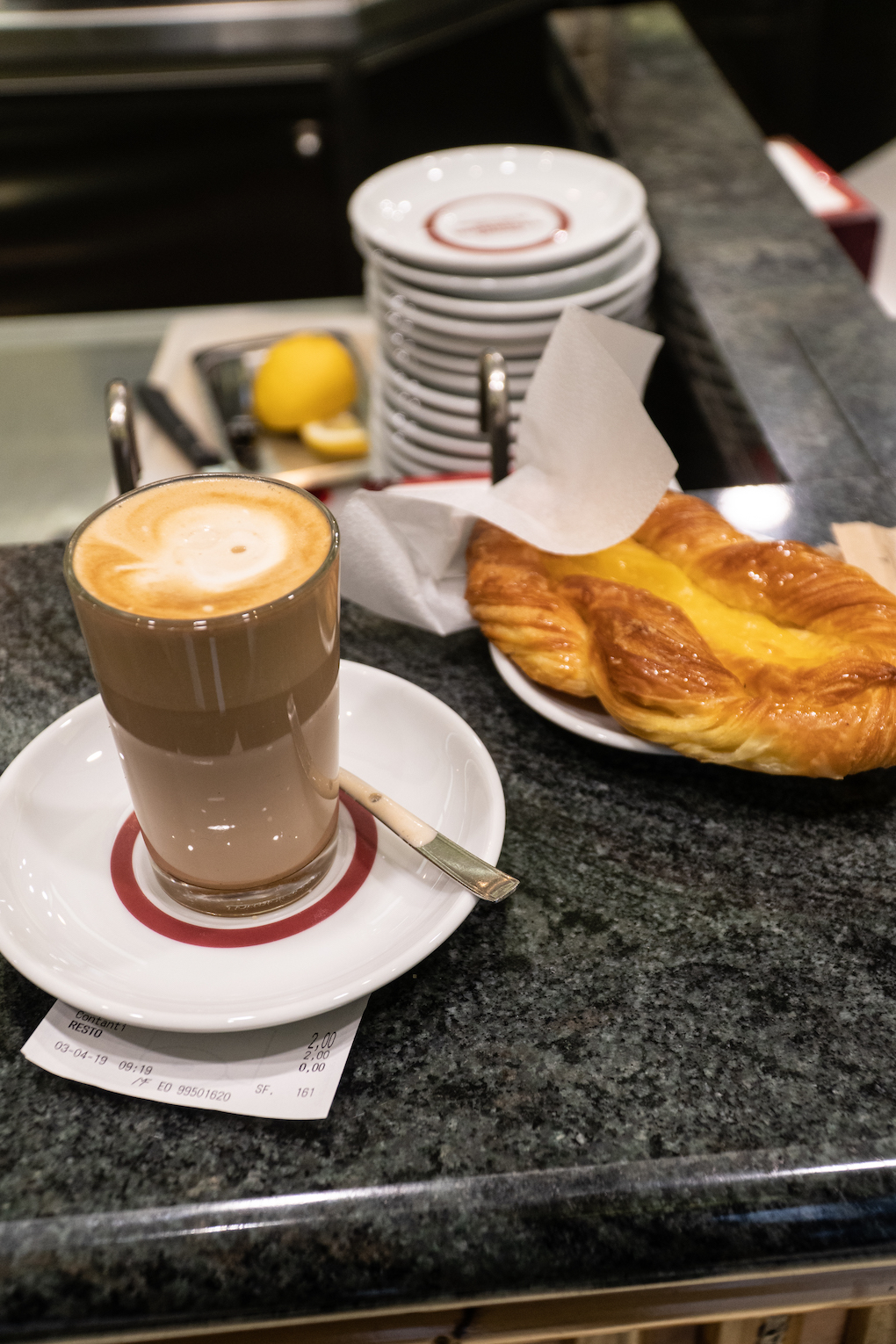
This is a Cafe Latte (a shot of Espresso, topped with hot milk). UN CAFE LATTE PER FAVORE. Want the pastry as well? E UN BRIOCHE!

Everyone understands a finger point! Just remember PER FAVORE and then GRAZIE!
OK, so what about drinks? Well the main differences when ordering a drink is if you want it in a bottle, glass, or in the case of wine, by the quarter or half a litre. Yes that’s right, you can have half a litre of wine with your lunch time pasta if you so wish, and in fact if you order a wine without establishing how much, you will in most cases automatically be given the big half litre jug and your beer may be presented in a 1 litre stein! A glass is UN BICCHIERE (un bik-ierre). If you want a glass of something you say: UN BICCHIERE DI… ( the ‘di’ means ‘of’) whatever it is you want. A bottle is UN BOTTIGLIA (Un bott-ilia). Now, let’s go over some possibilities:
WATER
Water is AQUA (ah-kwa) in Italian. Generally you’d ask for it in a bottle: UN BOTTIGLIA DI AQUA or in a glass UN BICHIERE DI AQUA. Choices are either still water: AQUA NATURALE (ah-kwa nat-yur-ale) or sparkling: FRIZZANTE (frizz-ahn-teh). So if you want to ask for a glass of sparkling water you would say: UN BICCHIERE DI AQUA FRIZZANTE PER FAVORE (a glass of sparkling water please). Tip – the fountains around Italy, particularly Rome, flow with perfectly good drinking water – once you’ve drunk your BOTTIGLIA, keep it to refill while you’re site-seeing.
BEER
BIRRA (bir-ra) comes in many shapes and sizes. Easiest to order in a bottle: UN BOTTIGLIA DI BIRRA, the only option you’ll have is which one? Peroni, Nastro Azzurro etc. Ask for it by the glass and you’ll be given the option of size, PICCOLO (small), MEDIO (medium) and GRANDE (large). The GRANDE is often very very big, so be warned. So if you want a small glass of beer you could simply say: UN PICCOLO BICCHIERE DI BIRRA PER FAVORE. Beer can also be served in a can UNA LATTINA (lah-tinna).
SOFT DRINKS/JUICE
Soft drinks and juice can be ordered the same as for the beer, by the glass, bottle or can, stipulating small, medium or large. Soft drinks are named pretty much the same as their English counterparts: Coca Cola is COCA COLA, fanta is FANTA, lemonade is actually SPRITE, sometimes LIMONATA. They don’t understand the word diet, so if you’re after a diet coke, ask for COKE LITE. If you want a can of coca cola you would say UNA LATTINA DI COCA COLA PER FAVORE. Juices are often freshly squeezed and sold in markets. Go with fresh produce as often as possible. I don’t want to get you too confused by naming all the varieties, but with juice generally FRESCA means freshly squeezed so generally the best option.
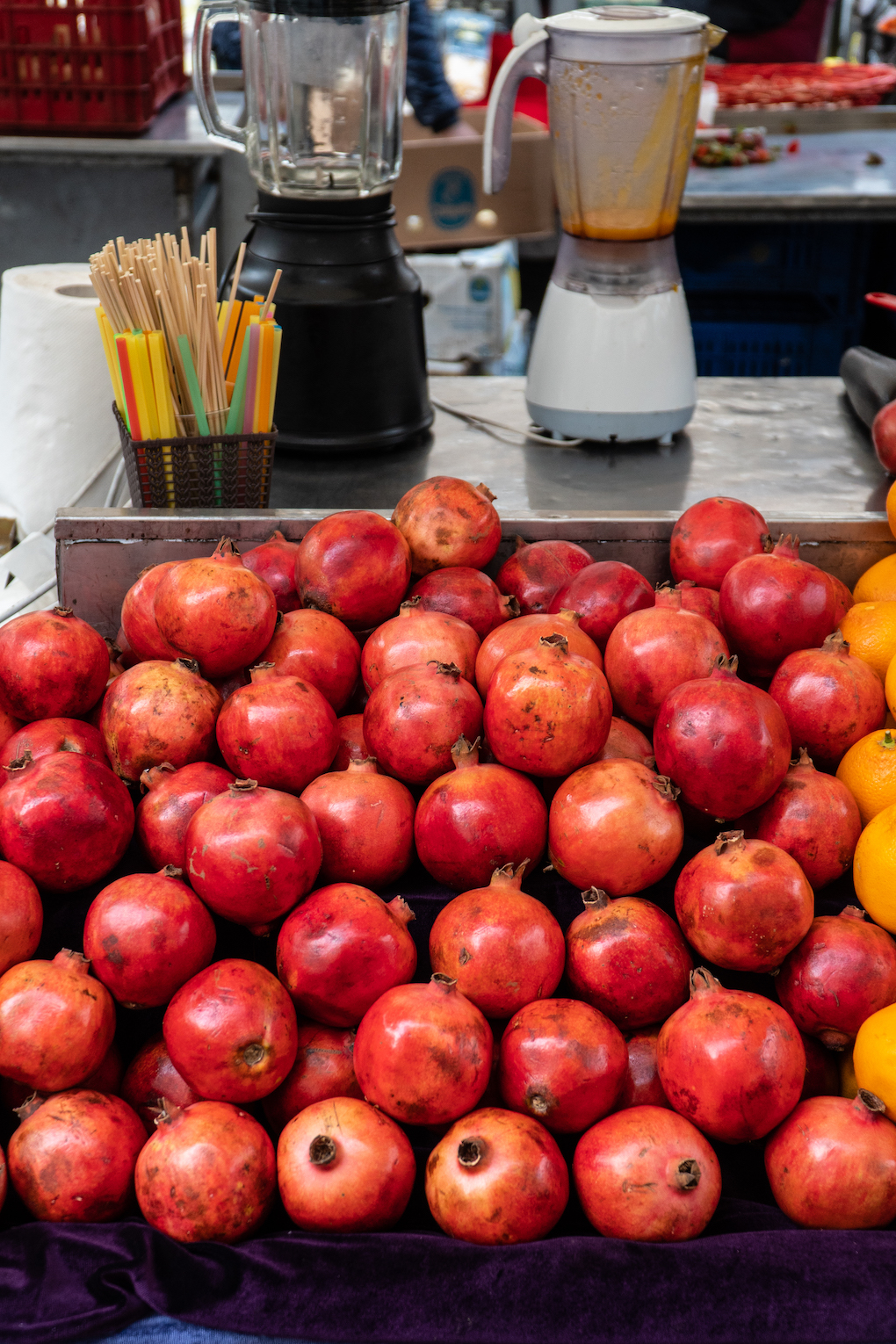
Pomegranates waiting to be squeezed into fresh juice.
WINE
If you’re a wine buff and serious about the exact wine you want off the menu, just read it out or point to it. If, like me, you’re not too fussy and want either red or white it’s pretty easy. BIANCO is white and ROSSO is red. To order a glass of white wine VINO (veen-oh) say UN BICCHIERE DI VINO BIANCO PER FAVORE ( a glass of white wine please). If you just want the house wine (and generally the cheapest) ask for A CASA (a cah-sa). Wine is also served by the quarter and half litre, and an economical option if you think you’ll have more than one glass or want to share. UN QUARTO (un quart-oh) is one quarter litre, MEZZA LITRO (mezzo leet-ro)s one half. So if you want a half litre of red wine you would say UN MEZZA LITRO DI VINO ROSSO PER FAVORE. Oh, and don’t forget the SPRITZ – it’s that orange drink made with Aperol you see everyone drinking. Order one just because you’re in Italy! UN SPRITZ PER FAVORE!!

PIZZA E UN BICCHIERE VINO ROSSO. A pizza and a glass of red wine.
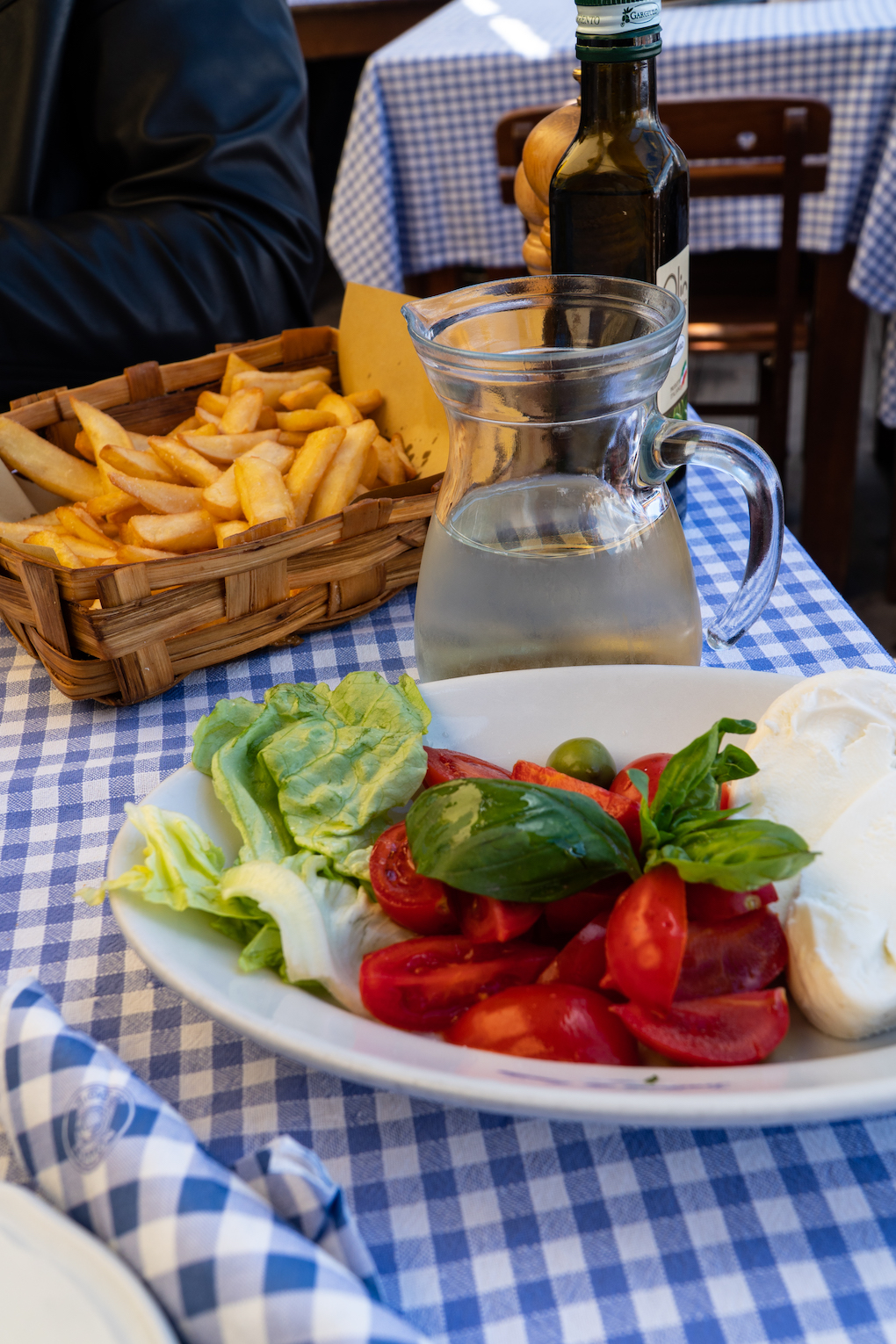
Why have a glass when you can have half a litre – yes please!
ALL THOSE DRINKS NEED TO GO SOMEWHERE
Public toilets are pretty much non-existent in Italy, so it is easiest to find one in a restaurant or bar, who will let you use it if you buy something from them. Get in the habit of using the toilet each time you eat. To ask for one, say TOILETTE (twoil-ette) PER FAVORE (toilet please). They will show you where it is. If you are out sightseeing where there aren’t any restaurants and bars (like walking around ruins) and in desperate need and need to ask someone, you can say the same thing, but add DOVE (dov-eh) to ask ‘where is’. DOVE UN TOILETTE PER FAVORE (where is a toilet please?). Hopefully they can point you in the right direction.
SPEAKING OF DIRECTIONS
Even if you can’t put together a whole sentence, using DOVE ( dov-eh) in front of the name of anywhere you’re trying to find will get you directions. DOVE COLISSEUM, or DOVE JEWISH GHETTO will make enough sense. If you are given instructions remember that DESTRA is right, SINISTRA is left (curiously being left handed was considered ‘sinister’) and DRITTO is straight ahead.
TRANSPORT
These are pretty easy to remember. Taxi is TAXI, Bus is AUTOBUS or simply BUS, Tram is TRAM, Train is TRENO, Ferry TRAGHETTO, but a lot of Italy can be done by foot A PIEDI. Need to ask when the next train, bus or ferry is due to arrive? QUANDO FA IL PROSSIMO ( quando fa il pross-imo) when is the next… TRENO, AUTOBUS, TRAGHETTO. How long? QUANTO TEMPO. What time? A CHE ORA (a khe or-a).
TICKETS
To buy a ticket BIGLIETTO (bil-ietto), it’s the same as asking for something off a menu. UN BIGLIETTO PER FAVORE. One ticket please. Only difference is you use PER (for). So to ask for a ticket on the bus you would say UN BIGLIETTO PER IL BUS PER FAVORE. If you want a return ticket say RITORNO (rit-orn-oh).
SHOPPING
After walking in the shop and giving the shop keeper a friendly BUONGIORNO, you may need to ask a few questions about what you want to buy. The main one, how much does it cost? QUANTO COSTA? If you’re buying food you may need to buy by the weight. UN ETTO is 100gm, and a standard measure when buying things like sliced salami, cheese etc. Otherwise ask for the weight in 100gm lots, remembering 100 is CENTO, so DUE CENTO means 200. Need a bag? Ask for UN SACCHETTO (sak-ketto) PER FAVORE.
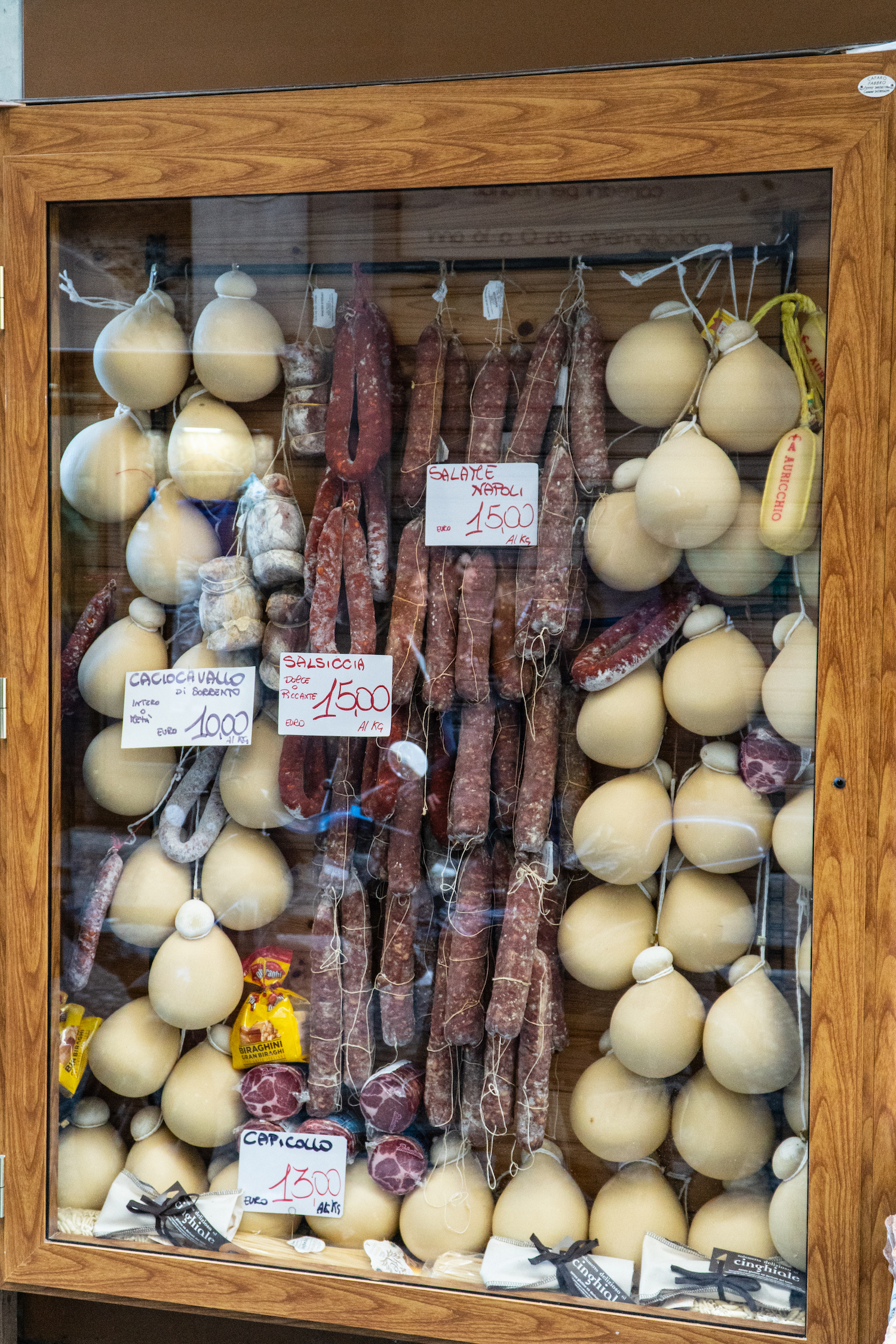
Window shopping, Italian Style…
GIVING COMPLIMENTS
Last but not least, please don’t be a tourist who complains. There is nothing worse than sitting in a restaurant listening to a tourist gripe about how the service is taking too long, the food isn’t what they expected, the portions too small/big etc. Accept that you are in another part of the world and things are not going to be the same as where you live. Sometimes that’s good, sometimes not. But that’s how we are different, and should be the reason why you went on a holiday in the first place. Of course if something terrible happens then by all means complain away, but in general, just go with the flow. There are always more good things than bad things on any holiday so focus on the positives. The bus was late and crowded? Ok, but how amazing was that place when you got there? The waiter was brusque? Sure, but how delicious was that pasta? In fact, when you experience something positive, say it out loud. Not only does it set you in the best mindset, you’ll always get a great reception and treated better. If the food was good, tell the waiter it was BUONO, if it was fantastic, BUONISSIMO! If you want to say something is beautiful: BELLO or BELLA (depending on whether the subject is male or female, which requires a little more knowledge of the Italian language to get right when you’re talking about an object rather than a living thing, but it doesn’t matter too much) , absolutely gorgeous BELLISSIMO or BELLISSIMA.

This view is BELLA – BELLA VISTA.
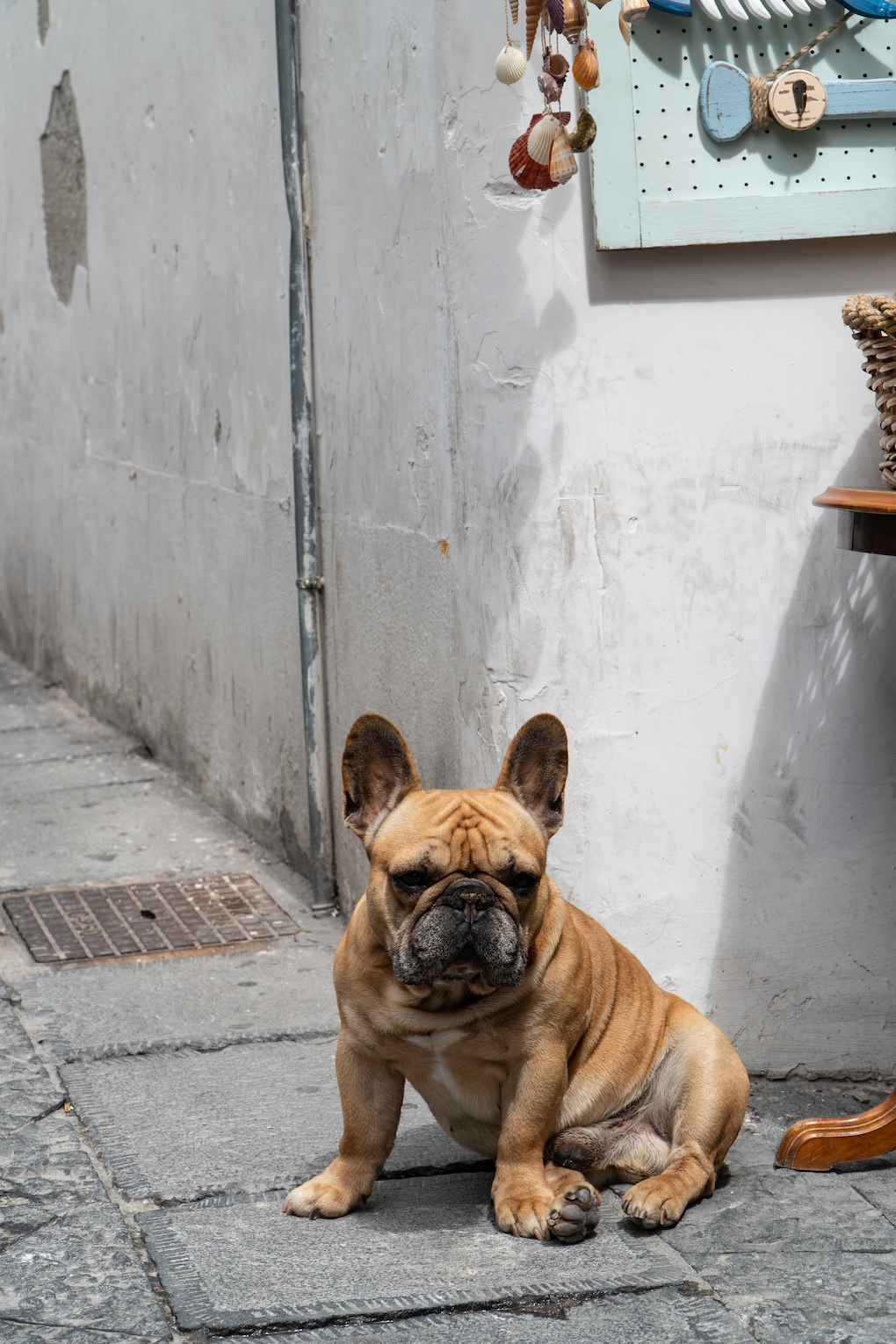
I thought this little dog in the streets of Amalfi was very BELLO! BELLO CANE!
Compliments are freely expressed in Italy, so if you’re female and a stranger walks past with a CIAO BELLA, don’t take offence, take it as a compliment and walk on by.
Whether it is Italy or any other country, taking the time to learn even a few words can make the holiday so much more enjoyable. Even it is only a please and thank-you. It’s a sign of respect to the people in the country you are visiting and the best way to connect with them. Remember, smiles are a universal language so use them frequently!
If you really want to learn the language before you go away, try an online programme like DUO LINGO. I personally have found it easy to use and all it takes is a few minutes a day. Then you can really give the lingo a go when you’re in Italy.
If all else fails, don’t forget one last phrase? PARLA INGLESE? ‘Speak English’? It’s nicer to ask in Italian. Then you can relax and ask whatever you want knowing you’ll be understood. Just remember to say GRAZIE!

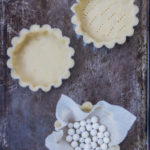

Wonderful information!!! Thank you for sharing!
Thanks Jen – hope you find it useful if you are travelling to Italy!
Thank you so much for your amazing article.
Thankyou!